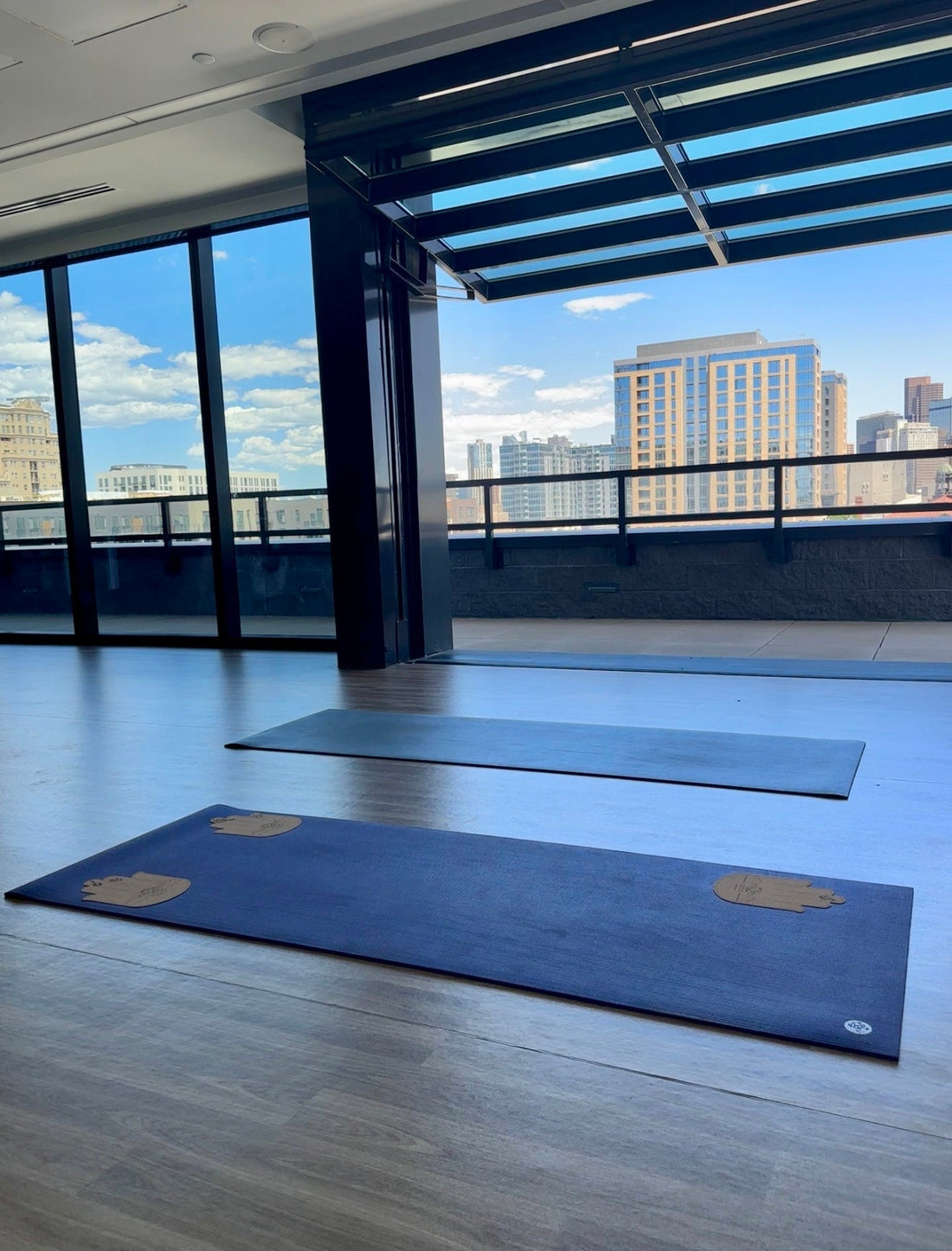
Yoga Mats 101: What I Wish I Knew Before Starting My Practice
Share
I Wish I Had a Tutorial on Yoga Mats When I First Started Practicing
When I first started practicing yoga, I wish someone had walked me through the basics of yoga mats. I began with the classic, inexpensive mat from a big box store—something to get me by as I figured out if yoga was going to stick.
Over time, I upgraded to a mat towel from the same store. Still, I was guessing. If you’re a beginner wondering what type of mat is right for you, here’s what I’ve learned over the years:
1. Cost vs Commitment
Your first mat doesn’t need to be fancy. Like many, I stuck with a budget option while I explored the practice. But as my commitment to yoga grew, so did my desire for something more supportive and durable. Investing in a quality mat can truly elevate your experience—but only when you're ready.
2. Convenience Matters
Big box stores offer the convenience of immediate purchase, but shopping in person also lets you feel the mat. Texture, density, and grip matter—and it’s helpful to test those in your hands.
3. Thickness & Comfort
This is something I overlooked early on. Too thin, and your knees will beg for mercy. Too thick, and your balance can suffer. I’ve found that 3mm to 5mm is ideal for most practices. My 1.5mm travel mat is great for packing, but not for long holds on hardwood.
4. Mat Length Really Matters—Especially if You’re Tall
If you’re tall or have a longer torso, don’t overlook the length of your mat. A standard yoga mat is around 68 inches long, but if you're over 5'8", your head or feet may end up hanging off the edge during certain poses—especially in savasana or downward dog. That can disrupt your focus and comfort. When I was just starting out, no one mentioned mat length, and I wish they had. Finding a longer mat (72" or even 84") can make a big difference in how supported and grounded you feel, especially when you’re new to the practice and trying to build confidence in your body.
5. Consider the Weight
Even mats that seem lightweight can feel bulky when tossed in the backseat or carried to class. If you’re traveling or commuting, the weight and size of your mat really matter.
6. Travel-Ready Options
For yoga retreats or vacations, your mat's compactness and weight become top priorities. My first two retreats, I didn’t bring my mat—and I regretted it. The grip was poor in humid environments, and I spent half the practice dreaming of my mat at home.
7. Practice Type Makes a Difference
Different styles of yoga may call for different mats. For example:
- Vinyasa: My 3mm mat supports flow and balance.
- Yin or Restorative: I prefer a 5mm mat for extra cushioning.
- Hot Yoga: I use a combo towel-mat—but they can stretch and shift, so test before committing.
8. The Grip Factor
This might be the most frustrating part of mat shopping. Some mats grip well at room temp but turn into slip-n-slides in heat. I’ve found expensive mats that almost hit the mark—but even they can lose grip over time.
That’s why I designed Cork Helping Hands.
These eco-friendly, semi-permanent cork grip accessories offer extra stability, sweat-resistance, and longevity to your mat—without the cost of replacing it every year. They're light, compact, travel-friendly, and perfect for hot yoga. More grip, less waste, and more money saved.
🌱 Sustainability Bonus
By prolonging the life of your mat with Cork Helping Hands, we reduce waste and promote conscious consumption—one practice at a time. I always donate my mats when they retire, but how much better would it be if we didn’t need to retire them so soon?
Final Thoughts
Your yoga mat should support your journey, not complicate it. Take time to explore what works best for your style, lifestyle, and values. And remember, sometimes the smallest additions—like Cork Helping Hands—can make the biggest difference.
